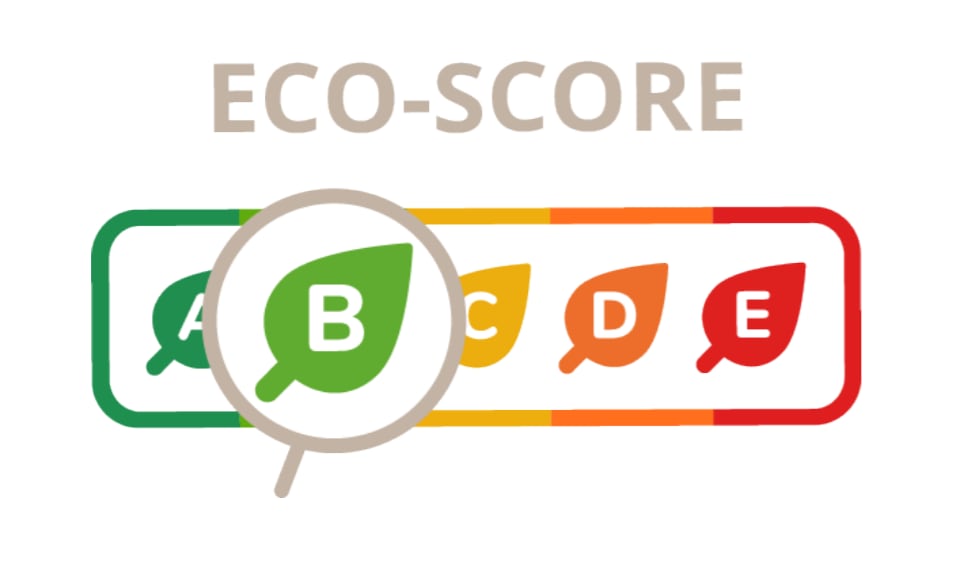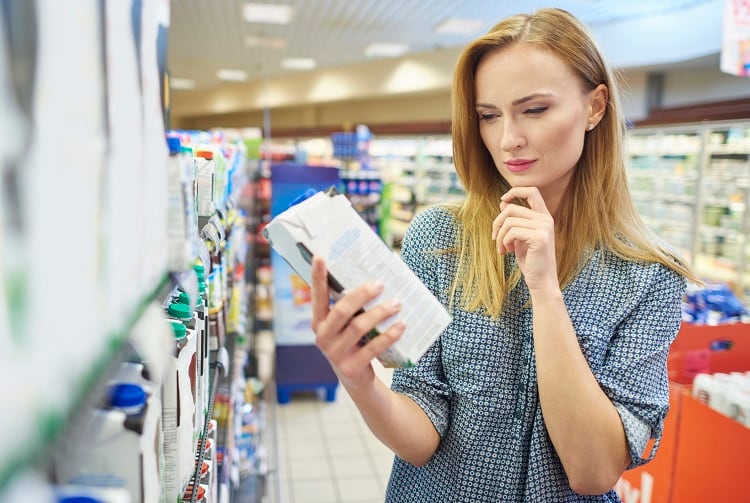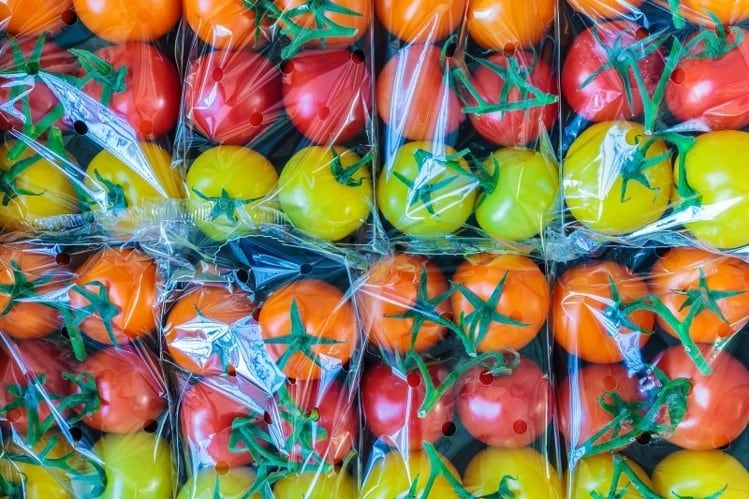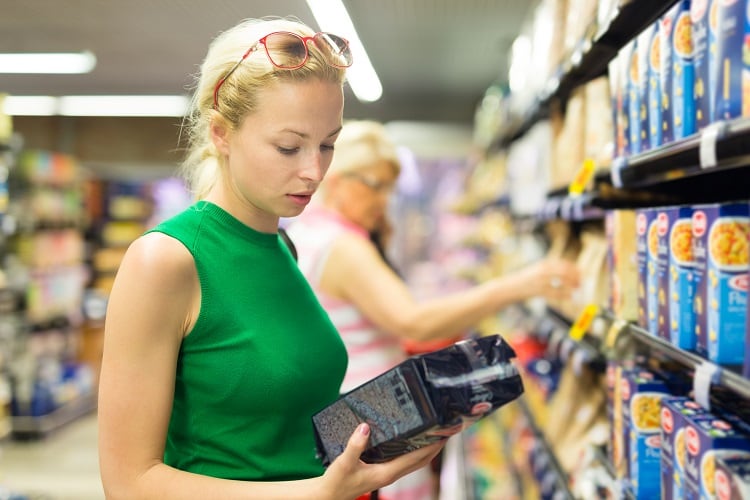Consumers are increasingly aware that what we eat has an impact on both human and planetary health.
Food production is responsible for a quarter of all greenhouse gas (GHG) emissions. But there is hope: research from WWF and environmental consultancy ECO2 Initiative suggests our individual GHG contribution can be halved by changing our diets.
In France, it appears consumers are not only interested in where their food comes from, but at what time of year it ends up on their plate. A total of 38% say they consider a food’s provenance and whether it is currently in season when making purchase decisions.
Yet an even greater percentage (78%) say they are not provided with enough information on the environmental and health impacts of food products when making these decisions.
ECO2 Initiative – developer of sustainable food smartphone app Etiquettable – is working to change this. The consultancy has produced a new front-of-pack (FOP) food label designed to help consumers check the environmental impact of food at a glance.
How does it work?
Eco-Score gives food products and ready meals a score out of 100, with colour-coding (from dark green to red) and letters (A to E) for consumer ease.
Products that score 0-20 are given an ‘E’ (red), 20-40 receive a ‘D’ (orange), 40-60 receive a ‘C’ (yellow), 60-80 receive a ‘B’ (light green) and the top score of 80-100 receive an ‘A’ (dark green).

How this final score is calculated, however, is more complicated. In a mathematic equation, Eco-Score = life cycle assessment (LCA) + bonus points – points deducted.
LCA is a technique for assessing the environmental aspects associated with a product over its life cycle. From cradle to grave, LCA addresses the extraction of raw materials associated with the product, as well as its production and distribution of energy throughout its use, reuse, and final deposit.
Eco-Score relies on category-specific LCA from ADEME’s (Agence de la transition écologique) Agribalyse project. ADEME has evaluated the environmental impact of at least 2,500 categories of products.
According to ECO2 Initiative, LCA does not factor in all relevant criteria in its assessment. Therefore, once the category-specific LCA is determined, other criteria are assessed and points are added and/or deducted from the original LCA score.
Local sourcing, recyclability, and impact on endangered species
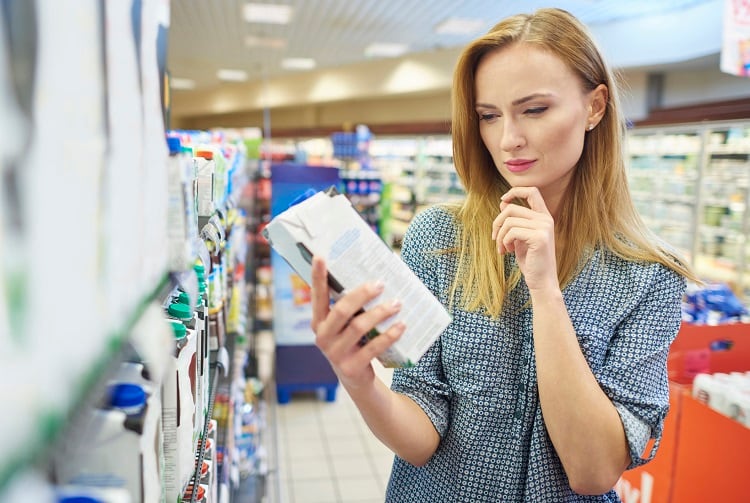
One of the areas where Agribalyse’s LCA is lacking, noted ECO2 Initiative, is in its assessment of the precise origin of ingredients. Agribalyse relies on a mix of sourcing country data to determine the average transport impact of particular ingredients.
Eco-Score’s calculation is more specific. It takes the provenance of each ingredient into account. For this criteria, products receive a bonus score from 0-15 points.
The LCA is also weak in analysing food production methods. Therefore, food products with third-party sustainability credentials have the opportunity to boost their score. Specifically, products certified by Nature & Progrès, Bio Coherence, and Demeter are eligible for +20 points. Those certified by EU Bio and AB Agriculture Biologique are eligible for +15 points, and +10 points can be awarded to those associated with HVE, UTZ, Rainforest Alliance, Fairtrade, Bleu Blanc Coeur (BBC), Label Rouge, ASC Aqua, and MSC.
According to ECO2 Initiative, the recyclability, size of packaging, and use of recycled materials are also poorly represented in the LCA. Wanting to encourage products that contribute to the circular economy, Eco-Score’s criteria marks down (0-15 points) packaging that is not renewable and/or recyclable.
Concerning a product’s impact on endangered species, the environmental consultancy noted the LCA doesn’t take all issues associated with biodiversity into consideration. Therefore, if a food product is in any way associated with overfishing or large-scale deforestation linked to the cultivation of palm oil – which increase the risk of extinction for fish, or primates, tigers, and birds – its overall score will be reduced by -10 points.
Eco-Score’s assessment of ready meals is largely similar. However, the seasonality of ingredients, and whether or not they were grown in a greenhouse – is also taken into account.
What does this mean for meat products? Or for food grown abroad?
Producers may well raise concerns about Eco-Score’s evaluation of certain foods: notably meat products and food grown and produced overseas.
While on the whole, meat products do tend to have a larger carbon footprint, the environmental consultancy stressed that meat products do not always carry receive an Eco-Score ‘E’ (red). Firstly, it depends on the species of animal: “Poultry has a lower impact than beef, for example,” noted ECO2 Initiative.
The way in which the meat is produced can also help to significantly improve its score, the consultancy continued. As long as its production method is made clear on-pack – for example if it carries an organic or Label Rouge label – it will score higher than conventionally produced meat.
Food items produced outside of France, and indeed, outside of Europe, will not automatically receive a low score, stressed ECO2 Initiative. “It depends on the product. Transport represents 5-30% of GHG impact, depending on the product. But the majority of the impact is associated with agriculture, livestock, and production.” This means, it continued, that a banana imported by boat from Guadeloupe, for example, could
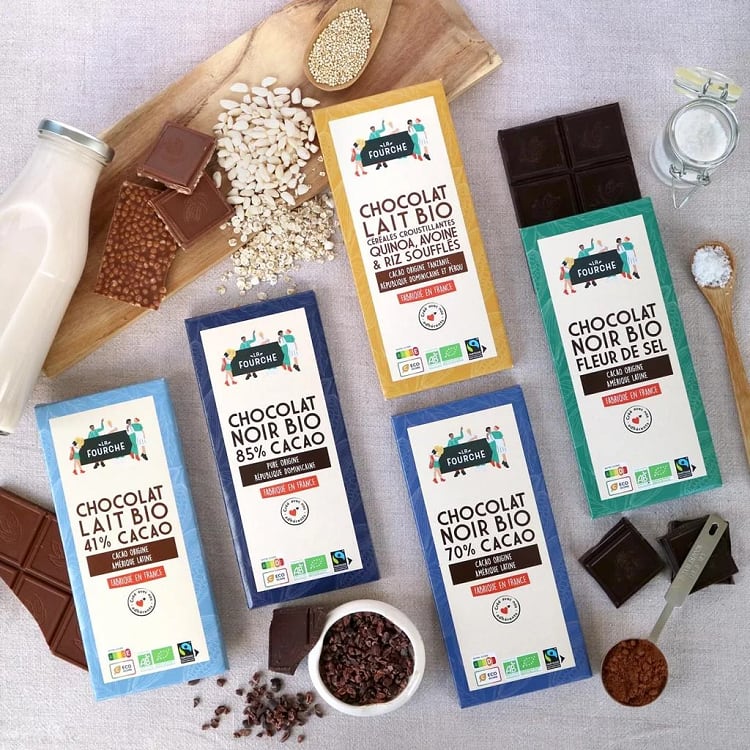
have a better score than an out-of-season tomato grown locally in a greenhouse.
Brands, retailers and apps onboard Eco-Score
Eco-Score can be applied in e-commerce and in-store retail environments. It can also be used to score the environmental impact of recipes.
The label has already been adopted by online restaurant and food delivery start-up FoodChéri, recipe app Frigo Magic, ready meal company Seazon, and food scanning app Yuka in France.
Online organic store La Fourche has also onboarded the label for some of its own-label products, including its line of cooking chocolate.
Co-founder of La Fourche, Lucas Lefebvre, said he believes Eco-Score will enable shoppers to make more informed purchasing decisions.
“For the first time in Europe, a collective of committed players, including La Fourche, is creating a transparent tool to guide consumers in their food choices. Like Nutri-Score for nutrition, Eco-Score will allow everyone to understand the environmental impact of a product at a glance.”
For Lefebvre, such a label is ‘deeply necessary’, adding that he hopes it will have significant repercussions for the food industry, as well as our consumption habits. “Eco-Score will help us all to better understand the impact of our consumption and to act to accelerate the ecological transition.”


